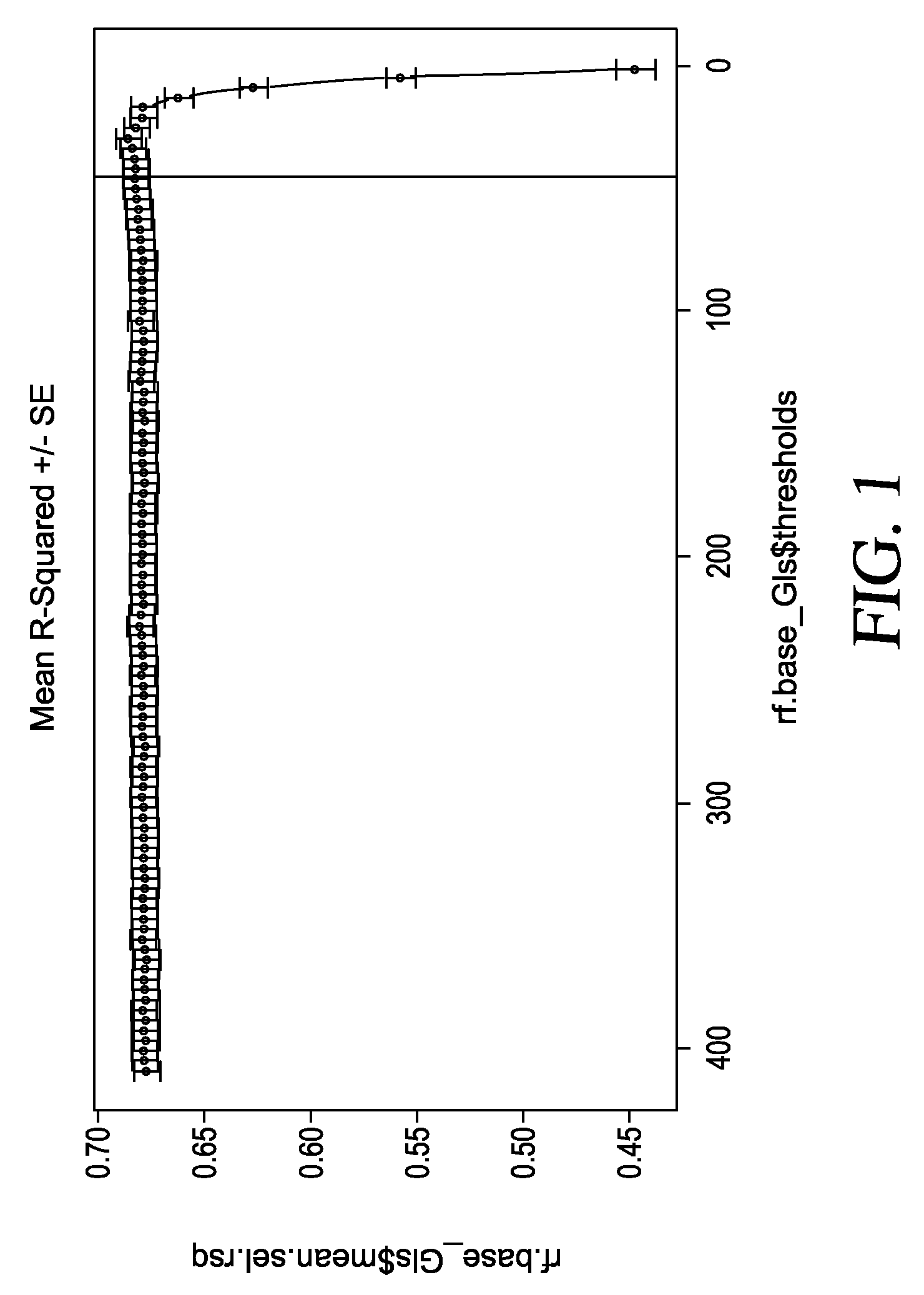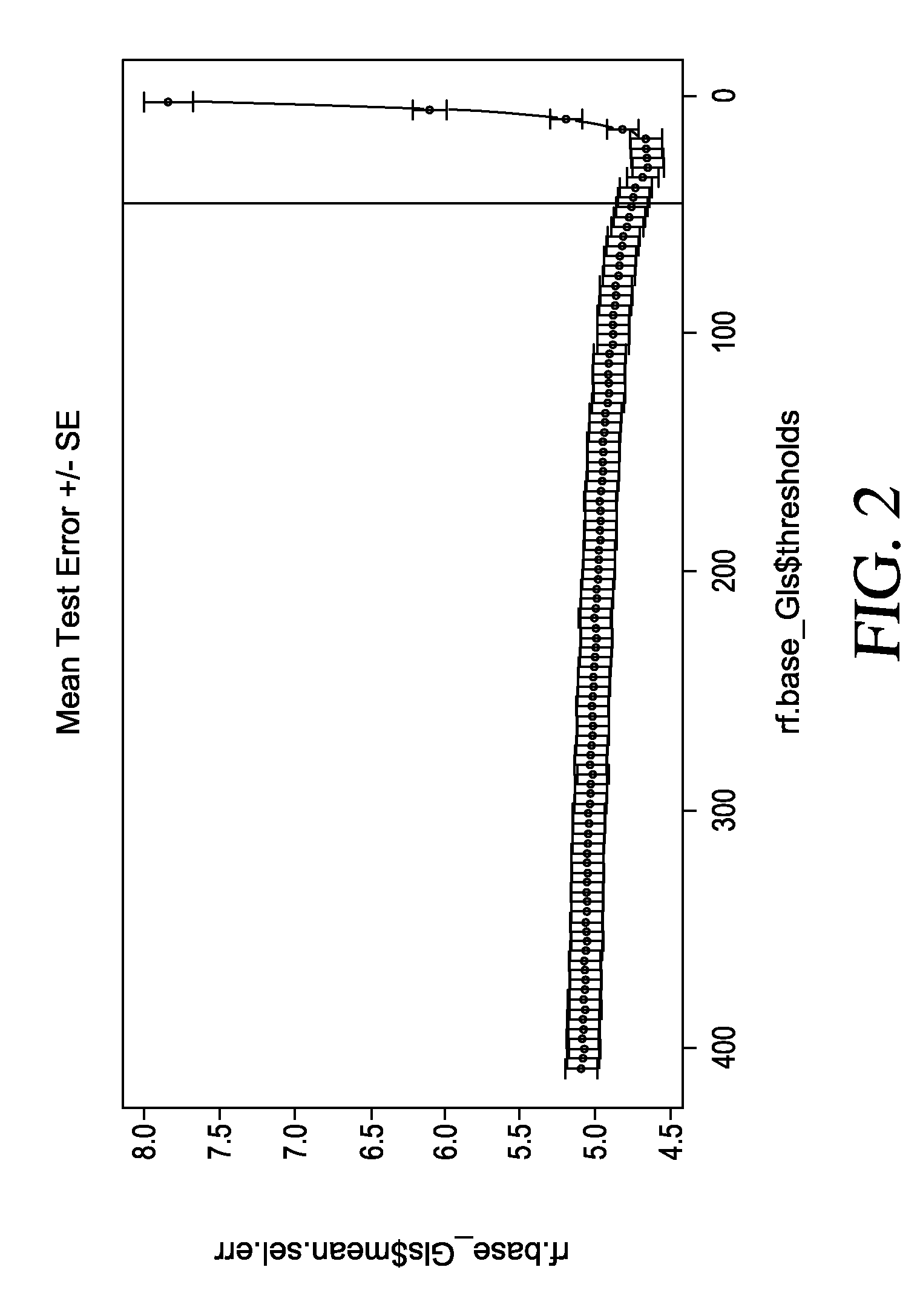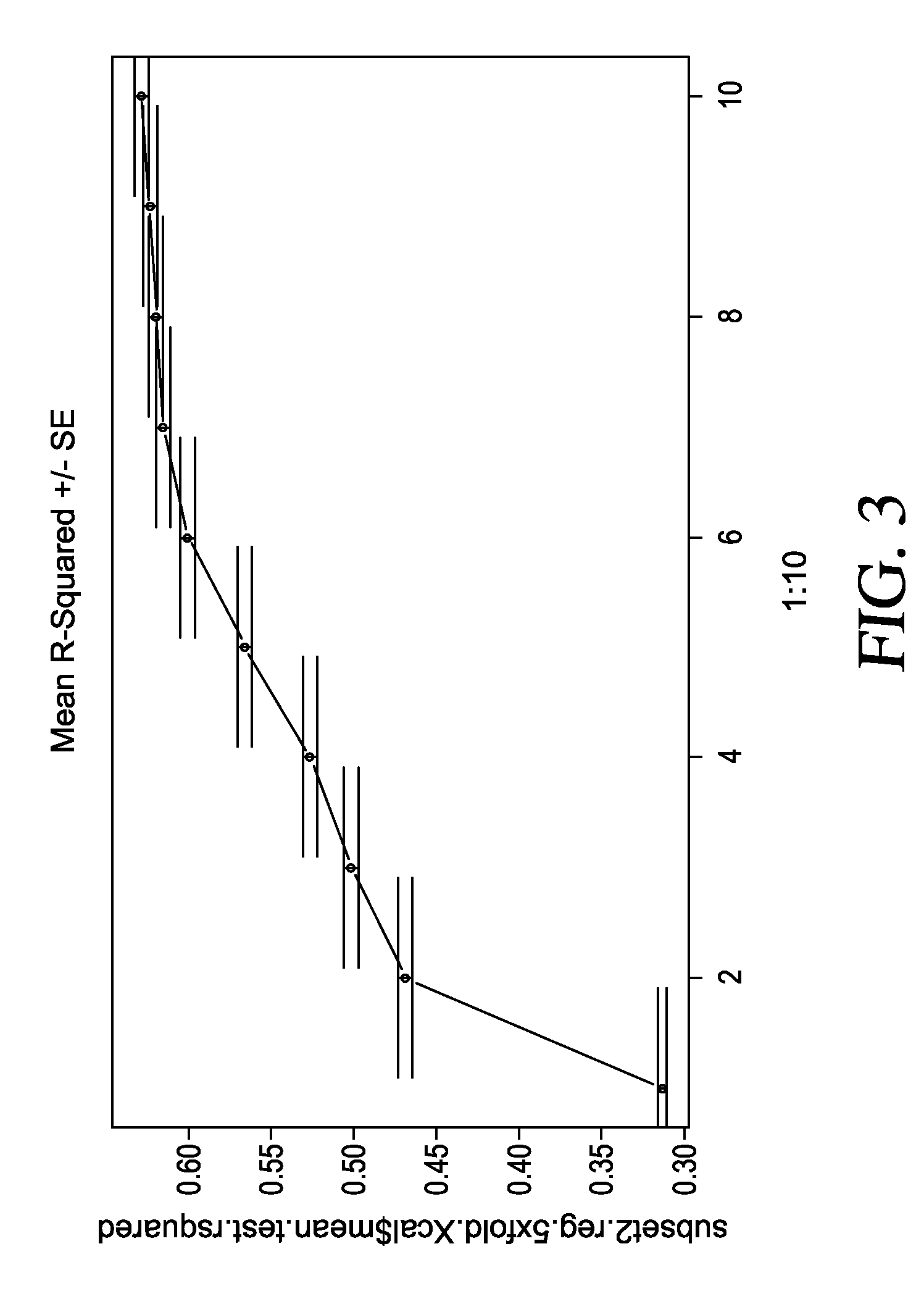Method for determining insulin sensitivity with biomarkers
a biomarker and insulin sensitivity technology, applied in the field of biomarkers, can solve the problems of impaired glucose utilization ability, insulin becomes less effective at helping tissues metabolize glucose, and long-term physiological damage already occurring at this stag
- Summary
- Abstract
- Description
- Claims
- Application Information
AI Technical Summary
Benefits of technology
Problems solved by technology
Method used
Image
Examples
examples
I. General Methods
[0151]A. Identification of Metabolic Profiles
[0152]Each sample was analyzed to determine the concentration of several hundred metabolites. Analytical techniques such as GC-MS (gas chromatography-mass spectrometry) and LC-MS (liquid chromatography-mass spectrometry) were used to analyze the metabolites. Multiple aliquots were simultaneously, and in parallel, analyzed, and, after appropriate quality control (QC), the information derived from each analysis was recombined. Every sample was characterized according to several thousand characteristics, which ultimately amount to several hundred chemical species. The techniques used were able to identify novel and chemically unnamed compounds.
[0153]B. Statistical Analysis
[0154]The data was analyzed using several statistical methods to identify molecules (either known, named metabolites or unnamed metabolites) present at differential levels in a definable population or subpopulation (e.g., biomarkers for metabolic syndrome ...
example 2
Biomarkers of Pre-Diabetes
2A: Identification of Biomarkers that Correlate with Glucose Disposal
[0159]A combination of biomarkers were discovered that, when used in an algorithm, correlate with the glucose disposal rate (i.e. Rd). Further, the initial panel of biomarkers can be narrowed for the development of targeted assays comprised of 15-30 candidate metabolites. An algorithm to predict insulin resistance was developed.
[0160]Several studies were conducted to identify biomarkers that correlate with glucose disposal. In a first study, plasma samples were collected from 113 lean, obese or diabetic subjects that had received treatment with one of three different thiazolidinedione drugs (T=troglitazone, R=rosiglitazone, or P=pioglitazone) (Table 1). Base line samples obtained from the subjects prior to treatment (S=baseline) served as controls. One to three plasma samples were obtained from each subject, with samples collected at baseline (all subjects; A), and after 12 weeks (B) or 4 ...
example 3
Biomarkers for Metabolic Syndrome Related Disorders
3A: Biomarkers of Metabolic Syndrome
[0198]Biomarkers were discovered by (1) analyzing plasma and serum samples drawn from different groups of subjects to determine the levels of metabolites in the samples and then (2) statistically analyzing the results to determine those metabolites that were differentially present in the two groups.
[0199]The samples used for the analysis were obtained from 19 Caucasian males aged 18-39, average age of 25.6, that had been diagnosed with metabolic syndrome and 19 healthy, age-matched, Caucasian males.
[0200]T-tests were used to determine differences in the mean levels of metabolites between the two populations (i.e., Metabolic syndrome vs. Healthy controls).
Biomarkers:
[0201]As listed below in Tables 12 and 13, biomarkers were discovered that were differentially present between samples from subjects with Metabolic Syndrome and Control (healthy) subjects.
[0202]Tables 12 and 13 include, for each listed ...
PUM
| Property | Measurement | Unit |
|---|---|---|
| insulin resistance | aaaaa | aaaaa |
| body weight | aaaaa | aaaaa |
| body mass index | aaaaa | aaaaa |
Abstract
Description
Claims
Application Information
 Login to View More
Login to View More - R&D
- Intellectual Property
- Life Sciences
- Materials
- Tech Scout
- Unparalleled Data Quality
- Higher Quality Content
- 60% Fewer Hallucinations
Browse by: Latest US Patents, China's latest patents, Technical Efficacy Thesaurus, Application Domain, Technology Topic, Popular Technical Reports.
© 2025 PatSnap. All rights reserved.Legal|Privacy policy|Modern Slavery Act Transparency Statement|Sitemap|About US| Contact US: help@patsnap.com



